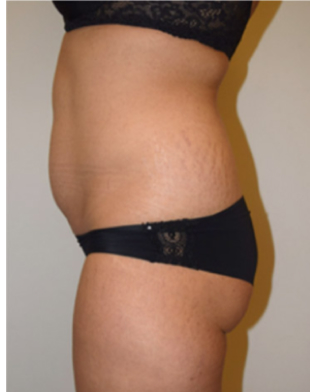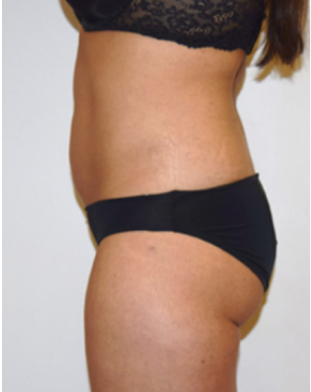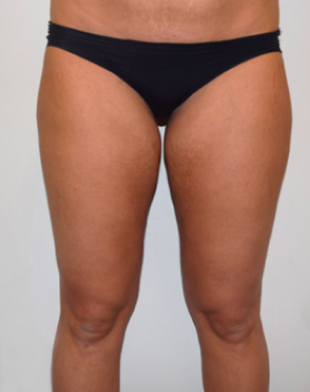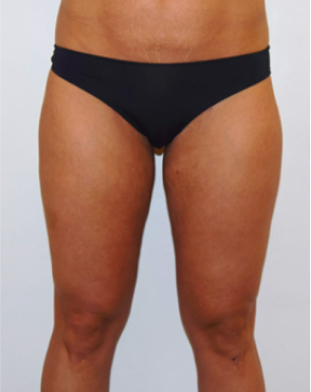Liposuction
Liposuction remains the most commonly performed cosmetic surgical procedure in the United States and one of the most popular procedures performed by New York plastic surgeon Dr. David Rapaport.
Dr. Rapaport has performed liposuction in New York City for over 27 years and is considered among the city’s best surgeons.
Liposuction is the gold standard method to reduce excess fat and achieve a slimmer contour. Your fat cells are distributed throughout your body early in life, as determined by your genetics. Fat cells cannot migrate or multiply, and once they are removed, they cannot come back. Therefore, any contour improvement achieved with liposuction is a permanent improvement and will persist, even if a patient gains weight.
Learn More About Liposuction
Liposuction is most effective for patients near their ideal weight. However, it is often best for the patient to be a few pounds above their ideal weight when having liposuction. This allows for any minor imperfections in the work to shrink with weight loss rather than grow with weight gain.
Obese patients can have liposuction, but their expectations must be realistic in that it will not cure obesity but may improve particularly troublesome spots. Liposuction is not a weight loss procedure, though it often helps motivate patients to improve their diet and exercise patterns. It’s best thought of as a body contouring treatment.
Revision Liposuction
Dr. Rapaport regularly sees patients with irregularities and overcorrection deformities from procedures performed elsewhere and can often provide significant improvement. During a consultation for liposuction in New York City, Dr. Rapaport will perform a complete evaluation and honestly inform the patient as to what improvement he or she can reasonably expect.
Like many other surgical procedures, the quality of liposuction results depends on the plastic surgeon’s skills. Dr. Rapaport has performed liposculpture in NYC for over 27 years and has a consistent track record of excellent results. The key to excellent results is meticulous attention to the patient’s contour and extensive experience with the procedure.
“By far, the biggest problem I’ve seen with patients who come from elsewhere with suboptimal liposuction is overcorrection.”
– Dr. Rapaport
Not uncommonly, fat grafting (transplantation of fat cells from areas of excess to areas of relative deficiency) may be employed to help address overcorrection deformities. Now that real contouring can be achieved non-invasively with CoolSculpting®, Dr. Rapaport will also assess to what extent this non-surgical technique can improve contour irregularities caused by prior treatment.
During the past several years, various liposuction techniques and technologies have been developed. Many are advertised as “the next great thing” in liposuction. These include laser liposuction (SmartLipo), ultrasonic liposuction (UAL), power-assisted liposuction (PAL), and radiofrequency-assisted liposuction (RFAL, BodyTite).
Many of these liposuction technologies deploy heat into the fatty tissue, damaging fat cells with the theoretical goal of producing tissue tightening. Although some of these liposuction technologies claim faster recovery, less bruising, and less pain, Dr. Rapaport warns against such claims. These technologies still require the tissues to be injected with a wetting solution prior to treatment (tumescence) and traditional aspiration, or suction, of fat after they are used.
In many cases, the claim that these technologies produce lasting tightening has never been well established. However, among the technologies Dr. Rapaport does believe to be beneficial are BodyTite, VASER, and PAL.
BodyTite differentiates itself from other ‘tissue tightening’ technologies by offering true bipolar radiofrequency energy delivery. This means that heat energy transferred across the skin is precisely controlled, allowing for measurable improvements in skin tightness as collagen shrinks when heated.
VASER Liposuction
Dr. Rapaport often chooses to use VASER technology when treating particularly dense tissues or areas that have previously undergone liposuction. The use of VASER will help to emulsify (or break down) fat before being aspirated with traditional or PAL cannulas.
VASER (vibration amplification of sound energy at resonance) assisted liposuction is the third generation of ultrasound-assisted liposuction device. Solid titanium probes deliver pulsed energy into the fatty tissue to break down the targeted fat. The probes are relatively small in diameter and contain grooves to disperse the energy better. The pulsing nature of the energy delivery also reduces heat generation. Overall, these two design advances allow for increased safety and better results than previous ultrasound technologies.
For patients desiring improved contour of their abdominal muscle, Dr. Rapaport harnesses this VASER technology to perform liposculpture. VASER allows for the superficial fat layer to be treated. This is key for performing abdominal etching or detailing of abdominal musculature. Dramatic contour can be achieved by targeting and removing this superficial layer of fat, particularly in patients who are relatively lean to begin with.
New York City plastic surgeon Dr. Rapaport performs all procedures using the tumescent technique. This technique, which is the gold standard according to most experts, involves the injection of a dilute solution of lidocaine as a local anesthetic and epinephrine to control bleeding prior to the actual suctioning of the fatty tissue. The tumescent technique effectively reduces blood loss, allows for increased fat removal and improved sculpting, and speeds recovery.
The suctioning is carefully performed using a 3 to 3.7-millimeter metallic rod, known as the cannula, inserted via a tiny puncture in the skin. The procedure is generally performed while the patient is comfortably sedated by our board-certified anesthesiologist. Patients typically have no memory of the event and leave the office within 30-60 minutes after the procedure, feeling great!
Anesthesia
Unlike many facilities that perform liposuction under general anesthesia, Dr. Rapaport performs most lipo procedures under IV sedation, also called “twilight” anesthesia. During this type of anesthesia, the patient has an IV, and Dr. Rapaport’s board-certified anesthesiologist delivers sedating medications via the IV. The patient is breathing on his or her own and is responsive to verbal input but typically has no memory of the procedure.
Following the procedure, the patient feels relaxed and comfortable. Dr. Rapaport’s chief anesthesiologist, Dr. John Grillo, is a master of IV sedation, and he has been working with Dr. Rapaport for the past ten years. This lighter technique virtually eliminates risks associated with general anesthesia, including the risk of blood clots and the risk of airway complications.
Liposuction of small areas may require only local anesthesia. This may include areas such as under the chin (submental liposuction), inner knees, or sometimes the arms, inner thighs, or lower abdomen.
In such cases, the patient would have no IV and no anesthesiologist present. Instead, the patient would either rely completely on Dr. Rapaport’s injections to numb the area or could take oral medications to provide relaxation and mild sedation for the procedure. This is, of course, all reviewed with Dr. Rapaport at the individual consultation to plan the procedure in a way best suited to each patient’s preferences and priorities.
Incisions
Although liposuction scars are small, on many areas of the body, if left unsutured, they will heal as circular indented marks resembling chicken pox scars. On the other hand, if the liposuction scars are sealed shut with sutures, they will not be able to drain, and patients will have more swelling and bruising from their procedure.
For this reason, Dr. Rapaport generally places a single suture in each incision to allow it to heal as a fine line while also allowing the drainage of fluid. Depending on the patient’s skin type, Dr. Rapaport may elect to use dissolvable sutures. If he chooses removable sutures, they will be removed at the first post-operative visit, approximately one week following the procedure.
One of the aspects of liposuction that makes it extremely appealing is the fact that scars are truly very small. The scars will range in size from 2-5 mm (a pencil eraser is about 5 mm across), depending on the area treated. Generally, these liposuction scars are hidden in inconspicuous places. For example, for outer thigh liposuction, scars can be hidden under the buttock crease, rendering them truly invisible, making this arguably the best liposuction Manhattan has to offer.
With Dr. Rapaport’s advanced technique, our NYC patients enjoy a fast, easy recovery. Most patients can return to work within three days following their liposuction procedure and return to the gym within a week. Patients can expect some bruising, swelling, and soreness in the treated areas for the first few days.
We will provide aftercare instructions and detailed information for each patient’s unique procedure and what they can expect afterward. Patients may need to wear a compression garment to reduce swelling and promote healing.
Patients can typically see some slimming effects immediately after liposuction, but swelling may initially obscure the results. Final results are visible in a few months when all swelling has resolved.
Liposuction results are permanent since the fat cells that are removed will not return. However, the surrounding fat cells can still expand if you gain weight, so maintaining a stable weight is important for optimal results. Many patients feel more motivated to lead a healthy lifestyle after liposuction to maintain their new slim, contoured figure.
Take the Next Step
Every patient’s transformation journey at Rapaport Plastic Surgery begins with a detailed consultation with Dr. Rapaport. To learn more about liposuction and determine if it’s the right choice for you, fill out the form below or call us at (212) 249-9955 to schedule an appointment. Our team is dedicated to providing the best plastic surgery NYC has to offer.
Ready to book a consultation or treatment? Just click the Book Now button below to schedule online.




